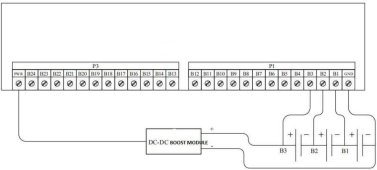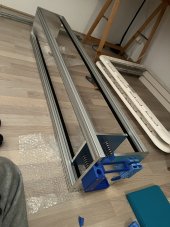Hello DIY community,
as an absolute beginner, I apologize in advance if some of my questions are silly.
Introduction:
I am currently converting a camper van and the next step is the electricity setup. Based on the fact that most people recommend a 12V system for beginners and that my vans alternator is also 12V I was wanted to do a 12V battery setup.
Question / Problem:
My problem: Based on my research, I could not find a BMS that can monitor every of my 16 cells in a 4s4p setup.
Question: Is there a way I can set up my components so that my BMS can monitor every single cell in a 12 V setup? If not what are my Alternatives?
My goal:
Having a battery setup that can be efficiently charged by my vans alternator and my 800w solar system. In case there is another solution that does not involve a 12V setup, how do I power my components that need 12V (like my diesel heater, LED lights etc.)?
My components:
Battery cells: 16 x EVE 3.2v lifepo4 280 Ah
BMS: JK B2A24S20P 200A Active Balancing 2 A
Step-Up Boost: DC 400W 15A
Solar Panels: 2 x 400w Vitovolt 300 M400 WG blackframe
Charge control: Renogy 60A MPPT
Vans Alternator: Mitsubishi 12V 220A A003TV0281ZE
Battery casing: Aluminum casing that fit 16 cells in line (with 300kg compression springs)
as an absolute beginner, I apologize in advance if some of my questions are silly.
Introduction:
I am currently converting a camper van and the next step is the electricity setup. Based on the fact that most people recommend a 12V system for beginners and that my vans alternator is also 12V I was wanted to do a 12V battery setup.
Question / Problem:
My problem: Based on my research, I could not find a BMS that can monitor every of my 16 cells in a 4s4p setup.
Question: Is there a way I can set up my components so that my BMS can monitor every single cell in a 12 V setup? If not what are my Alternatives?
My goal:
Having a battery setup that can be efficiently charged by my vans alternator and my 800w solar system. In case there is another solution that does not involve a 12V setup, how do I power my components that need 12V (like my diesel heater, LED lights etc.)?
My components:
Battery cells: 16 x EVE 3.2v lifepo4 280 Ah
BMS: JK B2A24S20P 200A Active Balancing 2 A
Step-Up Boost: DC 400W 15A
Solar Panels: 2 x 400w Vitovolt 300 M400 WG blackframe
Charge control: Renogy 60A MPPT
Vans Alternator: Mitsubishi 12V 220A A003TV0281ZE
Battery casing: Aluminum casing that fit 16 cells in line (with 300kg compression springs)







